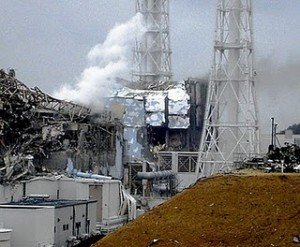Efforts to control the ongoing crisis at the Fukushima Nuclear powerplant in Japan have led to the release of radioactive steam into the atmosphere.
 Concern continues to grow over the risk posed by the damaged Fukishima nuclear power plant and raised levels of iodine-131, a radioactive isotope released from the reactor, have now been recorded at monitoring sites in the UK.
Concern continues to grow over the risk posed by the damaged Fukishima nuclear power plant and raised levels of iodine-131, a radioactive isotope released from the reactor, have now been recorded at monitoring sites in the UK.
In addition to the comments recently collected by the UK SMC, we can now also provide the following commentary from Australian nuclear experts, gathered by our colleagues at the Australian SMC.
Feel free to use their comments in your articles. To talk to a local expert on radiation and atmosphere contamination, contact the NZ SMC.
Fukishima power plant
Dr John Price is a former member of the Safety Policy Unit of the National Nuclear Corporation UK, a Professor at Monash University, Australia, and now a private consultant
Is the situation better or worse?
“The situation is better than it was in the first few days of the incident but we now have moved into a medium-term recovery phase which will take some time (several months) to stabilise. The situation is made difficult because of leaks in Unit 2 containment. This phase will end when long-term cooling and collection of emissions can be set up. I do not believe [concrete] entombment is an option though they will have to construct equipment to prevent both liquid and air borne releases.
Then the long-term recovery phase is where the fuel will be removed. Until this happens, water cooling is required. There is no justification in removing the fuel early since it will then have to be moved to another depository and there is the problem of worker exposure and the risks associated with that. As a result the long-term phase lasts for tens of years, perhaps 50 to 100 years. However maybe Japan, with its excellence in robotics, will be able to do it more quickly.”
Does it have to get worse before it gets better?
“No it is getting better, but it will take months to fully control the releases and establish water injection and cooling that can be regarded as adequately permanent. Worker safety is a key issue now.”
There are different temperatures quoted, at what temperature is there a problem?
“The temperatures at nozzles quoted by IAEA are low with respect to normal operating temperature which is about 290 degrees ºC. They seem to be getting lower which I would expect with long-term water injection.”
Is what is happening now what you would have predicted at the start?
“Once leaks were reported in Unit 2 containment on about 15 March, these problems were bound to occur.”
Do you think we’re getting enough information and can we be sure of its accuracy?
“I rely on the Nuclear and Industrial Safety Agency of Japan (NISA) English language site. This is very reliable but requires much interpretation.”
———–
Iodine-131
Stephen Lincoln is a Professor of Chemistry at the University Adelaide
“The detection of traces of iodine-131 at great distance from Fukushima indicates that the various hydrogen explosions and releases of steam have carried it kilometers high into the atmosphere from which it slowly descends to be detected at ground level. The levels detected so far are well below those at which health is threatened. Iodine-131 is a fission product arising from the fission, or splitting, of the uranium-235 nucleus in the fuel rods making up the core of a nuclear reactor. The fact that iodine-131 has been released indicates that the fuel rods have either been fractured or have melted at Fukushima. The zirconium alloy fuel rod cladding melts at about 2000 ºC and the uranium oxide fuel melts at about 3000 ºC – such melting is often referred to as a meltdown.
Radioactive iodine-131 accumulates in the thyroid gland where at high concentration it can cause cancer. It is readily displaced and then excreted when contaminated persons take iodine tablets. Iodine-131 emits both beta and gamma radiation.”